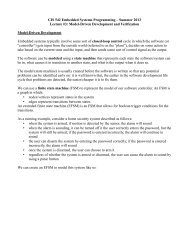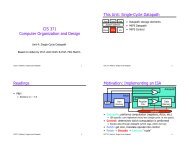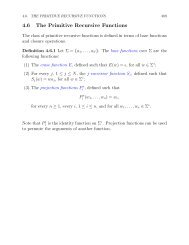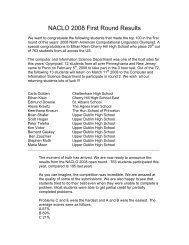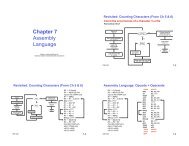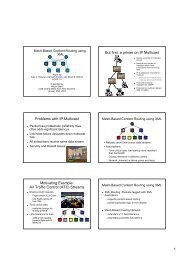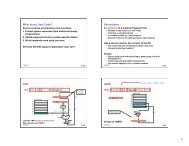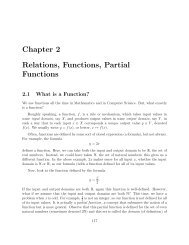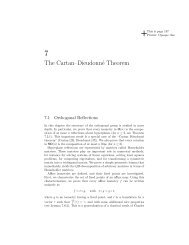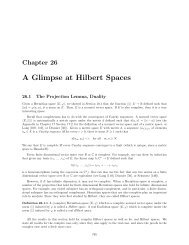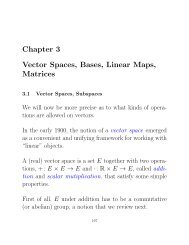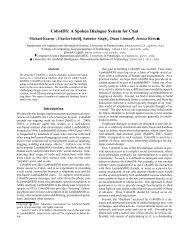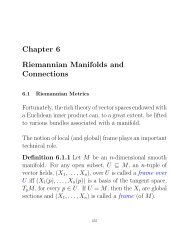Chapter 3 Context-Free Grammars, Context-Free Languages, Parse ...
Chapter 3 Context-Free Grammars, Context-Free Languages, Parse ...
Chapter 3 Context-Free Grammars, Context-Free Languages, Parse ...
Create successful ePaper yourself
Turn your PDF publications into a flip-book with our unique Google optimized e-Paper software.
46 CHAPTER 3. CONTEXT-FREE GRAMMARS AND LANGUAGES<br />
Applying the first phase of the method of lemma 3.3.3 to the grammar G ′ 3,wegetthe<br />
rules<br />
E −→ EX+T,<br />
E −→ TX∗F,<br />
E −→ X(EX),<br />
E −→ a,<br />
T −→ TX∗F,<br />
T −→ X(EX),<br />
T −→ a,<br />
F −→ X(EX),<br />
F −→ a,<br />
X+ −→ +,<br />
X∗ −→ ∗,<br />
X( −→ (,<br />
X) −→).<br />
After applying the second phase of the method, we get the following grammar in Chomsky<br />
Normal Form:<br />
E −→ [EX+]T,<br />
[EX+] −→ EX+,<br />
E −→ [TX∗]F,<br />
[TX∗] −→ TX∗,<br />
E −→ [X(E]X),<br />
[X(E] −→ X(E,<br />
E −→ a,<br />
T −→ [TX∗]F,<br />
T −→ [X(E]X),<br />
T −→ a,<br />
F −→ [X(E]X),<br />
F −→ a,<br />
X+ −→ +,<br />
X∗ −→ ∗,<br />
X( −→ (,<br />
X) −→).<br />
For large grammars, it is often convenient to use the abbreviation which consists in grouping<br />
productions having a common left-hand side, and listing the right-hand sides separated



